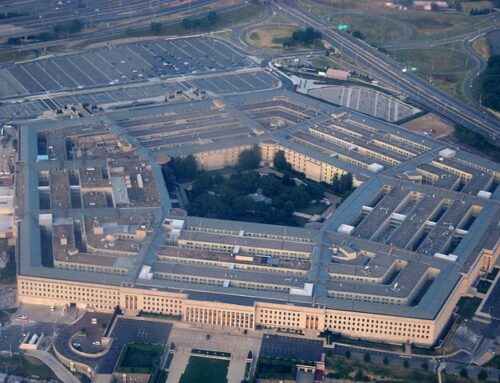Back in 1983, when President Reagan unveiled his vision of a weapons system that could intercept and destroy ballistic missiles before they hit U.S. soil, he warned it would take “years, probably decades” likely marked by “failures and setbacks.”
Today, the Ballistic Missile Defense System (BMDS) – originally the Strategic Defense Initiative or “Star Wars” – has racked up plenty of years, failures and dollars. Yet the most expensive weapons system fielded by the United States ($120 billion to date) is operating largely outside the reach of government auditors.
Though BMDS has its roots in the Cold War, its unaccountable budget structure was created more recently by former Defense Secretary Donald Rumsfeld. By moving the program’s many elements out of the regular Defense Department budget and into a newly-created Missile Defense Agency (MDA), BMDS avoids the pesky review process all Pentagon projects must undergo as they move through various stages of development and production.
MDA exists in an exalted program status, exempted from budgeting rules that require the agency to produce baseline cost and schedule estimates that DoD and Congress can measure progress against. It is not hindered by “fly before you buy” acquisition laws that require the Defense Department’s testing and evaluation office to green-light weapons before they go into full production. It is not subject to independent review. Finally, it classifies its entire budget as research and development funding, allowing it to move money around more easily—despite the fact that it has laid bricks and mortar on projects like the interceptor bases in California and Alaska.
In short, all the hard-earned lessons about how to protect taxpayers from wasteful procurements go out the window when it comes to the MDA.
MDA has a perpetual “get-out-of-jail free” card when one considers the “setbacks” that have, per Reagan’s predictions, befallen BMDS. First there’s the fact that it has only managed to take out incoming missiles in tests so tightly managed that they do not approximate realistic conditions, according to the Government Accountability Office. The test results are about as valid as those of a college applicant who takes the SAT with the answer key in their lap. Then there’s the agency’s failure to meet recent performance goals while jacking up its budget estimate. That nearly 60 percent of MDA’s manpower comes from contractors who cost around $3 billion also cries out for rigorous oversight.
After years of rubber stamping, Congress is finally taking on the MDA’s hide-the-budget strategy. The House Oversight and Government Reform Committee held the first in a series of hearings on missile defense earlier this month, and language added to the 2008 defense authorization bill called for an independent review by a federally-funded research center of the agency and proposed missile sites in Eastern Europe, among other measures.
But previous actions by MDA indicate Congress will have to bolster its remedies with some strong medicine. The agency rejected GAO recommendations to adopt firm baselines or use procurement funds for its operational systems. And though MDA restructured its 2009 budget request, theoretically to enhance transparency, it neglected to include a schedule baseline or a comprehensive accounting of all the system’s elements.
MDA is asking for a record $10 billion in fiscal year 2009 in a clear attempt to load up its budget before the new administration takes over. But Congress shouldn’t be taken in: MDA’s blank-check days must draw to a close and its budget integrated back into the Defense Department’s planning process. No major weapons program, much less the nation’s costliest, should be allowed to operate completely off the balance sheet.











Get Social